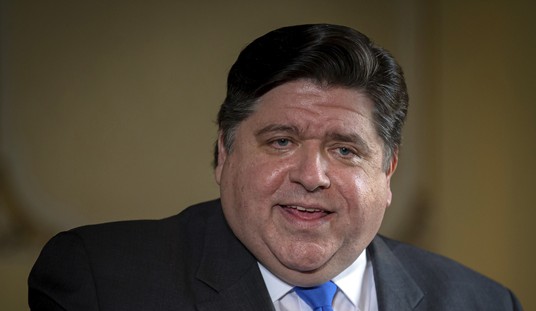On Tuesday, the Commission on Care, part of the 2014 act to reform the health care system in the Veterans’ Administration (VA), published its recommendations for reform. Notably absent from this report, however, is the true story of what happened behind the scenes. According to two veterans on the commission, the opportunity for true reform was blocked by government unions, special interests, and the Obama administration.
Committee Chairperson “Nancy Schlichting is putting out a false narrative of bold reform,” Darin Selnick, an Air Force veteran who served as special assistant to the Secretary of Veterans Affairs from 2001 to 2009, told reporters on a conference call Wednesday. Selnick argued the recommendations contain “nothing new, nothing bold, and they don’t advance the conversation any further than TriCare in 1996.”
Stewart Hickey, a Marine Corps veteran who served as the national executive director of AMVETS from 2011 to 2015, agreed. “We spent more time listening the the VA and how they were ‘fixing’ the problem,” Hickey explained. He argued that the commission just touted the administration’s constant refrain — “The VA just needs more money and more resources to fix their problems.”
Both veterans argued the root cause is “a culture problem.” Hickey admitted that “they do need some resources, but Congress has given them all kinds of resources and they squandered them.”
He lamented that the 15-member commission “spent more time listening to the government employee unions than to actual veterans.”
“A case study in how to forestall government reform.”
Selnick and Hickey co-wrote an op-ed in The Hill explaining that the Commission on Care provides a blueprint, a “case study in how to forestall government reform.” They explained four key components in how the commission was prevented from achieving any real reform.
1. Items for discussion were ruled out, ensuring a preordained conclusion.
Throughout the entire process, Committee Chairperson Nancy Schlichting (CEO of the Henry Ford Health System) and Executive Director Susan Webman met with veteran service organizations (VSOs) and White House officials to discuss their policy preferences. They warned commissioners that White House officials would reject reform proposals they deemed to be “privatization,” and said VSOs would have to approve any recommendations. This “ruled out discussion of viable options and preordained the conclusion from the start.”
Next Page: Controlling the flow of information, unleashing “scare tactics” and propaganda.
2. Controlling the flow of information.
Selnick and Hickey allege that Susan Webman, a longtime labor lawyer, declined research requests and disregarded set timelines. She did not give them time to prepare before meetings, and rewrote key documents to reflect the preferences of the VA and the White House. “Dedicated staff members found a toxic working environment that was hostile to careful fact-finding and sound policymaking.”
3. Upholding the status quo.
Selnick and Hickey described the commission as “unusually deferential to the preferences of VA leadership and government labor unions — that is, the very people who ran the veterans health care system off the tracks.” VA and VSO leaders were allowed to express their perspectives, and a study of veterans’ preferences about their health care was never performed. This preempted a “veteran-centric approach.”
4. Creating an echo chamber.
Selnick and Hickey alleged that the VSOs involved are known for unquestioning support of VA positions, and they coordinated messaging with the White House and VA officials. At the same time, progressive media outlets and government unions “pushed misleading propaganda” which minimized VA problems and deployed “scare tactics” alleging “sinister schemes to ‘privatize’ the VA — something no commissioners had proposed.”
This bled out into the Democratic presidential debates, with Hillary Clinton and Bernie Sanders both repeating the attacks that some groups like Concerned Veterans for America (CVA) aimed to “privatize the VA.” The Washington Post fact-checked these claims and found them false.
“Ultimate blame for this failure lies with the Obama White House, which worked closely with the department bureaucracy and government labor unions in a campaign to shelter the VA’s government-run healthcare apparatus from significant change,” Selnick and Hickey declared.
“Once again the lobbyists worked with some of the commissioners and tried to thwart the efforts of those who wanted to see real VA reform,” Hickey told reporters in the call.
Next Page: Is the VA worse than Amtrak and the post office?
Worse than Amtrak and the post office?
Perhaps ironically, Hickey argued that the VA would work better if it ran like Amtrak or the post office, two non-profit government corporations not exactly known for their efficiency. He argued that this transition would “take the politics out of it.”
When pressed on the comparison, the Marine Corps vet said that “from an organizational standpoint,” the post office and Amtrak are better than the VA. “In the four years I was there, we had maybe four undersecretaries” in charge of the Veterans’ Health Administration. “You can never improve an organization if you’re going to have that kind of turnover in leadership positions.”
Selnick agreed, explaining that he “studied extensively the history of Amtrak and the post office.” Both systems were falling apart in late 20th century, but were comprehensively restructured to become more efficient. Even the Tennessee Valley Authority (TVA) and the Federal Deposit Insurance Corporation (FDIC) are running better than the VHA, Selnick argued, “which is a total meltdown going forward.”
A total lack of accountability.
The VA suffers from a total lack of accountability, explained Dan Caldwell, CVA’s vice president for legislative and political action. “A VA employee in Puerto Rico right now is guilty of armed robbery, but she was able to get her job back,” Caldwell said on the call with reporters. He mentioned another case where an employee took a veteran patient to a crack house, and it took over one year to fire that person.
Even in cases of “egregious misconduct,” Caldwell noted, “it is still very difficult to fire them.” He mentioned the three key individuals responsible for the wait times scandal in Phoenix, Ariz., which launched the VA scandal into the national media.
Sharon Helman, former head of that VA branch, was one of the first people fired after the VA reform law in 2014, but in October of last year, she sued the federal government seeking her job back. It looks likely that she will win her case. Worse, Helman wasn’t even fired for her role in the VA scandal, but for receiving an illegal contribution from a lobbyist!
The VA needs reform badly, and the final Commission on Care report does not go far enough, Selnick and Hickey argued. The very cronyist cultural problems that make the VA so inefficient in the first place also contributed to stopping reform through this very commission.
At the very least, the American people deserve to know the truth about what happened — and why the Department of Veterans Affairs will only continue to get worse.









Join the conversation as a VIP Member